Botanical name : Pisum sativum
Synonyms :
Common name : Pea, Snap Pea, Snow Pea, Garden Pea, Podding Pea, Sugar Snap Pea
Easy to save seed
Lifecycle: Annual
Pollination: Self. Flowers stay sealed through the pollination process.
Mating system: Perfect flowers
Suggested spacing: Grow as for eating
Seed specific requirements: Flowers are damaged at temperatures below -2 C and may be unable to set pods. At the other end of the scale, some varieties are more heat tolerant than others. Generally 35 C will lead to reduced yields.
Isolation distance: Keep varieties far enough apart so that they cannot physically intermingle with other varieties. 3 to 5 metres is suggested.
Population size: 5 to 10 plants recommended. A single plant will provide viable seed.
Seed maturity: Harvesting for seed may begin as soon as the pods change colour and become leathery. It may be more convenient to wait until they have dried on the plant to crackly, brown pods.
Processing method: Break open dried pods to separate seed by hand. If the pods are completely dry they can be threshed to break the pods and remove the seed. Sieving and winnowing will separate the threshed beans from the pods.
Expected seed viability: 3 years
Images
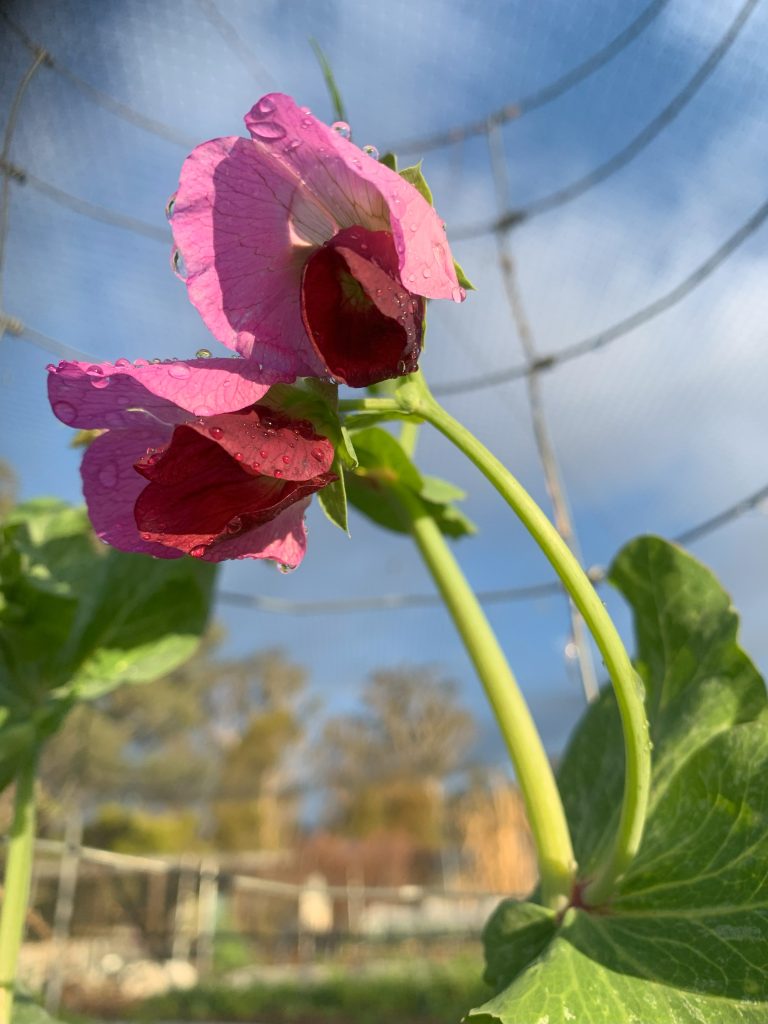
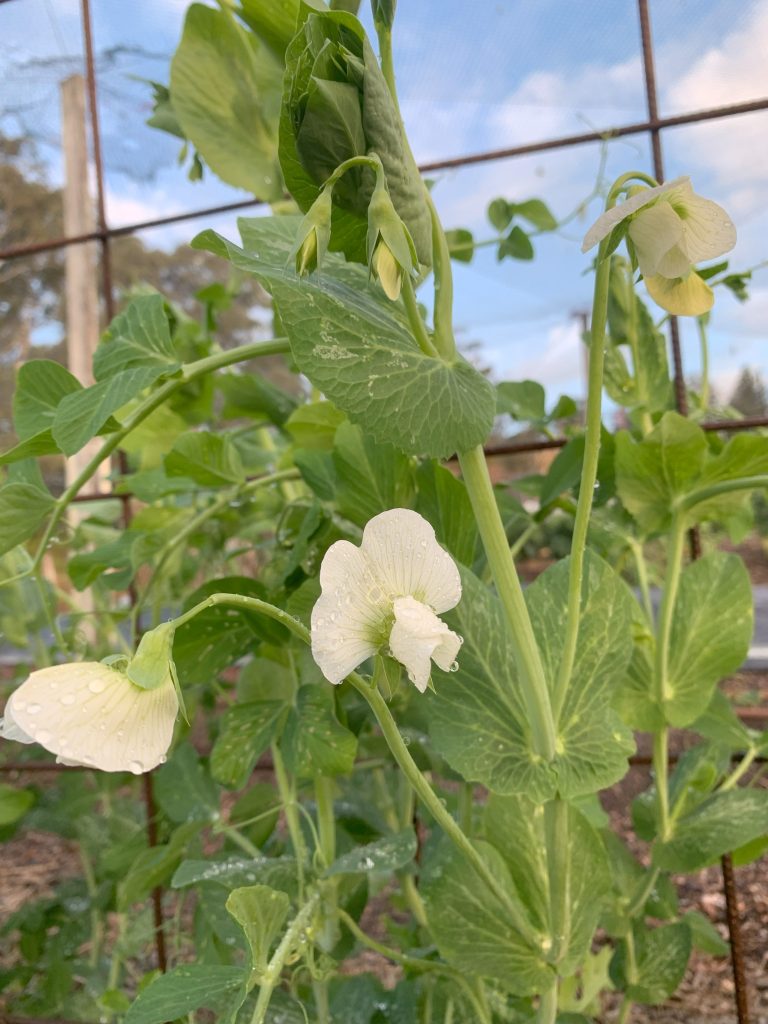
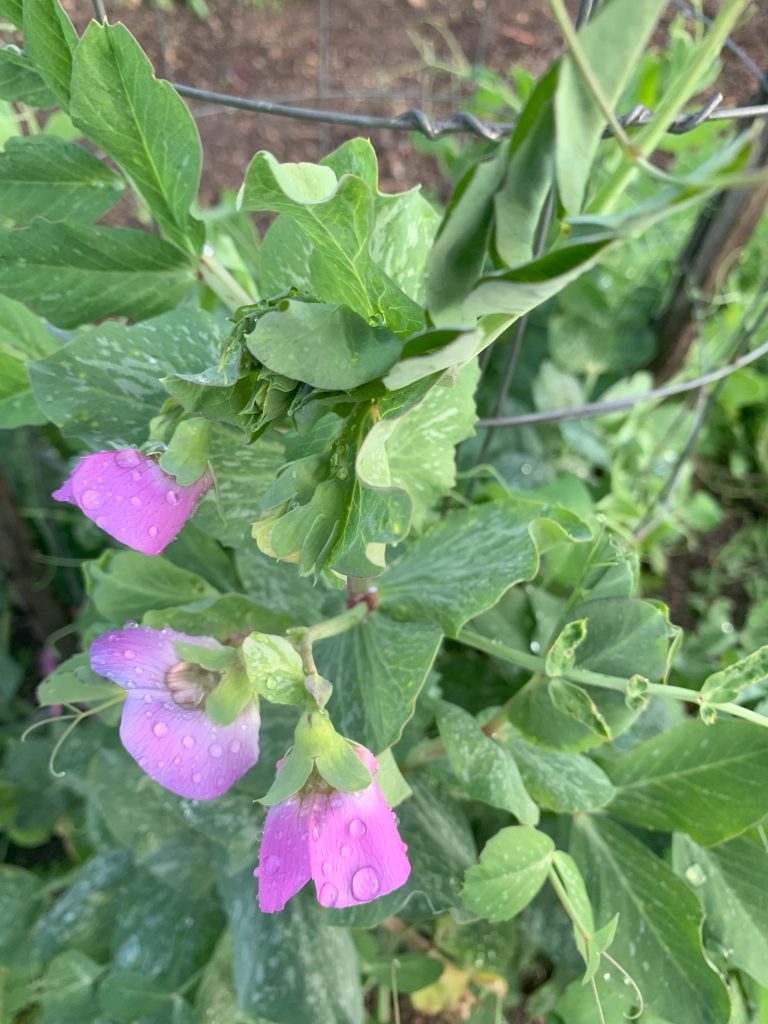
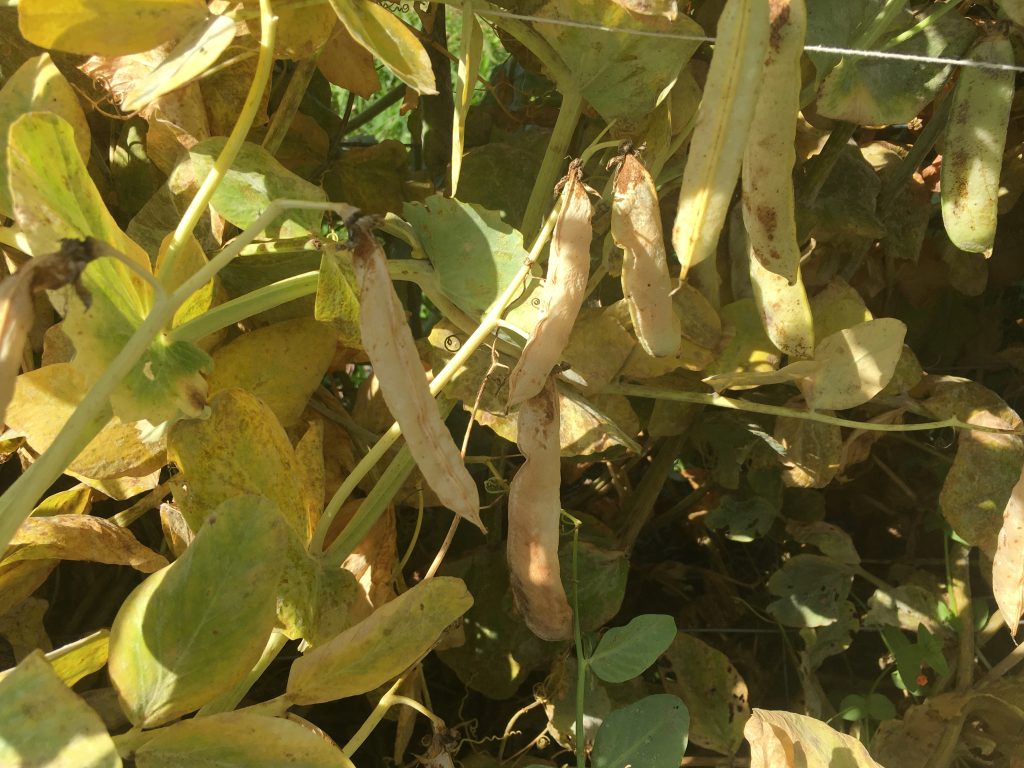
Cultivation
Peas being grown for seed should be grown in the same way as peas for eating. Climbing varieties will be easier to manage if given a structure to climb up. Peas are relatively light and can be grown on quite flimsy structures, including twine netting available for that purpose.
Planting times will vary by location as temperatures below -2 C and above 35 C should be avoided.
Growing for seed
Grow peas as for eating, there are no special cultivation requirements for seed saving. As the pods are left to mature on the plant, the ground space is needed for slightly longer than when they are grown just for eating.
Selection
The characteristics to look for are plant height; flower colour; pod colour, shape and size; seed colour and size; and disease resistance. Plants that vary from the variety being conserved should not have seed collected from them.
Diseases & Pests
Mildew is a common issue with peas. Some varieties have been specifically bred to be more resistant to it.
Harvest
Leave the pods on the plants until they have dried. Bush or dwarf varieties can be harvested when most of the pods have dried off by cutting the entire plant and placing it on a tarp to finish drying. Climbing varieties will likely need each pod to be hand-picked from the trellis as it becomes dry enough.
Be vigilant and collect any dried pods before rain. Once dried on the plant, significant rain very easily causes mould to grow on the pods and seeds.
If necessary pods can be harvested as soon as the colour begins to change and pods become leathery in texture.
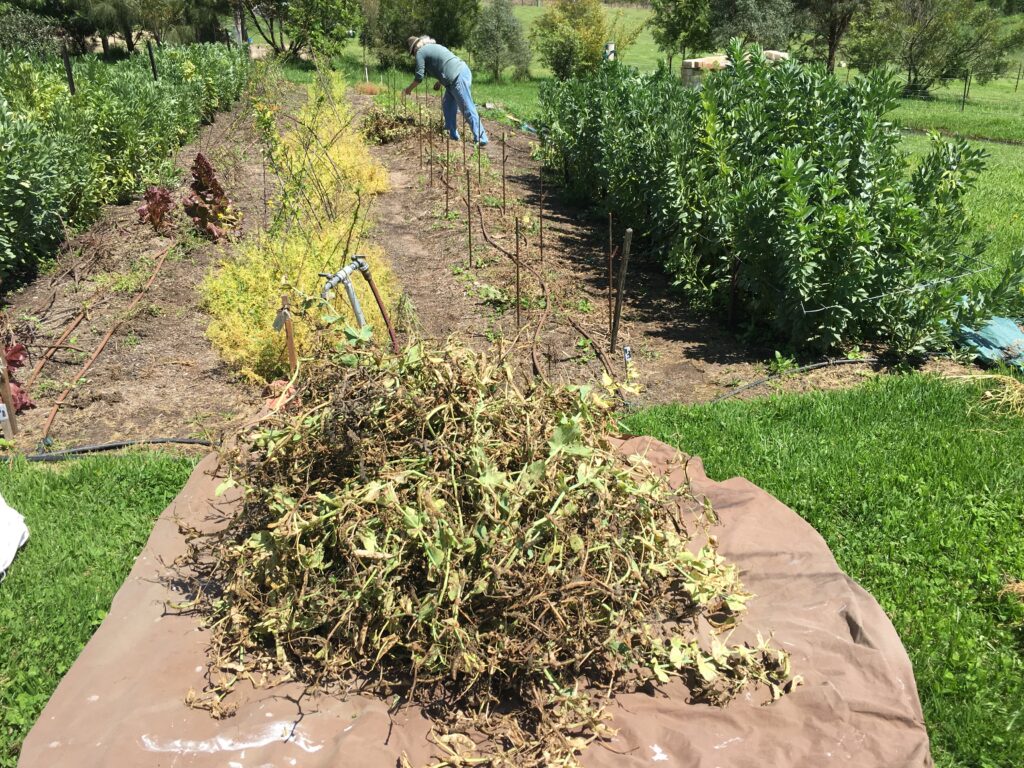
Processing
Pea seeds look like dried out peas. Once the pods are dry they can be broken open to get the seeds out. This can be done by hand for each pod. Alternatively the usual methods of walking on the plant material or using a threshing machine can be tried. If the seed is dry it is difficult to damage it by threshing. Do not be tempted to try threshing the plant material before it is dried as the seed could be damaged while it is still moist and soft.
Storage
After processing, it is a good idea to keep the seed in a paper bag in a dry location to ensure that any moisture being held in the seed has a chance to dry off. Peas are large seeds and can take a surprisingly long time to dry out fully internally.
Dryness can be tested by hitting a sample seed with a hammer. If it shatters it is dry enough, if it squashes at all then it is still holding moisture. Have a look at our video on dryness if you need more help with this part.
There is a fair likelihood that insect pests will have laid their eggs in or on the seed. To stop them in their tracks one of the easiest methods of control is to freeze the seed for a few days. To do this the seed must be absolutely dry first. It then must be placed in an airtight container – like a glass jar – before going into the freezer for 48 to 72 hours to kill pests and their eggs.
Contributors
Liz Worth, Julie Davies
